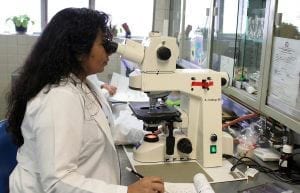Congenital Generalized Lipodystrophy a.k.a. Berardinelli-Seip Syndrome
What is congenital generalized lipodystrophy (CGL)?
Congenital generalized lipodystrophy, also known as Berardinelli-Seip syndrome, is a very rare autosomal recessive skin condition that is characterized by an extremely scare amount of body fat and an extreme amount of muscularity.
The amount of fat loss determines the severity of associated metabolic problems that result from this condition.
What causes congenital generalized lipodystrophy (CGL)?
CGL is caused by mutations of specific genes: the AGPAT2 gene, the BSCL2 gene, the CAV1 gene, and the PTRF gene. The gene affected relates to the specific type of CGL, i.e. Type 1, Type 2, Type 3, and Type 4, respectively. These mutations are inherited in an autosomal recessive manner.
What are the symptoms of congenital generalized lipodystrophy (CGL)?
Infants with all types of CGL have almost a total loss of body fat and an extremely muscular appearance. They may display prominent superficial veins. In addition, children grow at an accelerated rate, have an increased appetite, and have enlarged hands, feet, and jaws.
Later on, CGL causes fat to build up in the muscles and liver, leading to other complications such as insulin resistance, hyperpigmentation, pancreatitis, heart problems, liver disease, and diabetes.
There are other symptoms of CGL that are dependent on the specific type of the condition, such as intellectual disability in CGL type 2 and polycystic ovary syndrome in women.
How is congenital generalized lipodystrophy (CGL) diagnosed?
CGL is diagnosed using a clinical examination to identify the characteristic symptoms of the disease and a detailed patient and family history. In addition, a blood chemical profile can be used to assess glucose, lipids, liver enzymes, and uric acid levels, and a MRI scan can show the characteristic pattern of fat loss in CGL. Molecular genetic testing can be used to detect the specific gene mutations and confirm a diagnosis.
What are the available treatments for congenital generalized lipodystrophy (CGL)?
Currently, treatment for CGL is centered around symptom management. Most importantly, patients with CGL should follow a high carbohydrate, low-fat diet.
In addition to this diet, the U.S. FDA recently approved the drug, Myalept as a replacement therapy option to treat the complications of leptin deficiency.
Other symptomatic and supportive treatments include corrective, cosmetic surgery to improve appearance, and liver transplantation should liver disease become severe.
Where can I find more information about congenital generalized lipodystrophy (CGL)?
Congenital Generalized Lipodystrophy (CGL) Articles





